Chinese New Year 2025: Dates and Celebrations
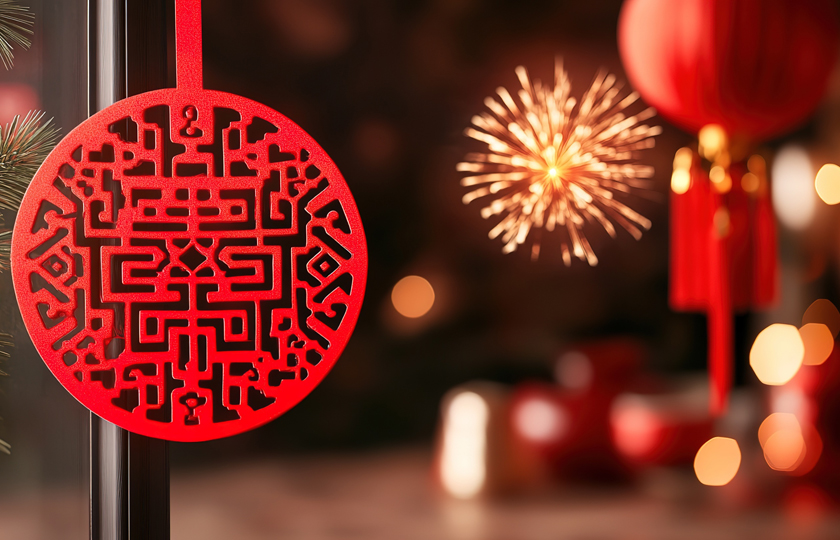
Chinese New Year, also known as Lunar New Year or Spring Festival, marks the beginning of a new year and the end of the old one. So,How long is Chinese New Year 2025?
How long is the Lunar New Year in 2025?
Length of legal holidays:
In 2025, it is 8 days.
In 2025, the Lunar New Year, namely the first day of the first month of the Yisi year, corresponds to January 29, 2025 on the Gregorian calendar, Wednesday. As a public holiday, the vacation time for Chinese people during the Lunar New Year in 2025 is from January 28, 2025 (Lunar New Year's Eve, Tuesday) to February 4, 2025 (the seventh day of the first month of the lunar calendar, Tuesday), a total of 8 days.
Government agencies, schools, universities and many companies will have holidays. However, some enterprises (such as banks) usually arrange employees to take turns on duty. Public transportation can still operate normally during the Spring Festival.
Traditional celebration time:
It lasts for more than a month.
According to traditional customs, the celebration time of the Spring Festival is relatively long. As early as the twelfth lunar month, people begin to prepare for the New Year. There is a saying that "in the eighth day of the twelfth lunar month, jackdaws are frozen to death." On the Laba Festival, people drink Laba porridge, which can be regarded as a prelude to a series of Spring Festival activities.
Then, on the 23rd or 24th day of the twelfth lunar month, it is the Little New Year. People begin to worship the Kitchen God, clean houses, and prepare New Year's goods and other activities. The festive atmosphere continues until the Lantern Festival on the 15th day of the first month. After the Lantern Festival, the Spring Festival celebration activities gradually end. So, if counted from the eighth day of the twelfth lunar month to the fifteenth day of the first month, the time span of traditional Chinese New Year celebration activities may be as long as more than a month.
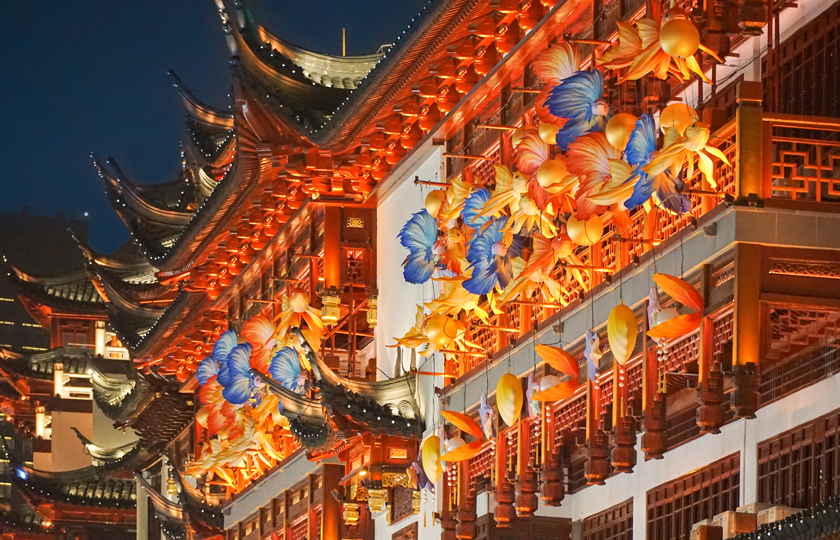
Why do Chinese New Year dates change every year?
The lunar calendar is based on the lunar phase cycle. A year is about 354 days, which is about 11 days shorter than the Gregorian calendar. In order to synchronize seasons with the solar year, the lunar calendar adopts a leap month system. An additional month is added approximately every three years. Therefore, the length of the lunar year is different from that of the Gregorian year. Due to the adjustment of leap months, the date of the Spring Festival in the Gregorian calendar changes every year and usually falls between January 21 and February 20.
Why is it called Spring Festival?
The reason why the Spring Festival gets its name is mainly because:
Matching seasons: The Spring Festival is usually close to the beginning time of spring in the solar calendar. Spring symbolizes new life and hope.
Agricultural tradition: In ancient times, celebrating the Lunar New Year was to pray for a good harvest. Spring is the sowing season, so it is important.
Historical evolution: The name "Spring Festival" was not widely used until after the 1911 Revolution in China. Before that, it was called New Year's Day, Zhengyandan, or simply New Year. After the revolution, the Gregorian calendar was adopted for official use, and the first day of the lunar year was renamed the Spring Festival to distinguish it from the Gregorian New Year.
In conclusion, the Spring Festival is an important festival to celebrate the Lunar New Year and the arrival of spring.
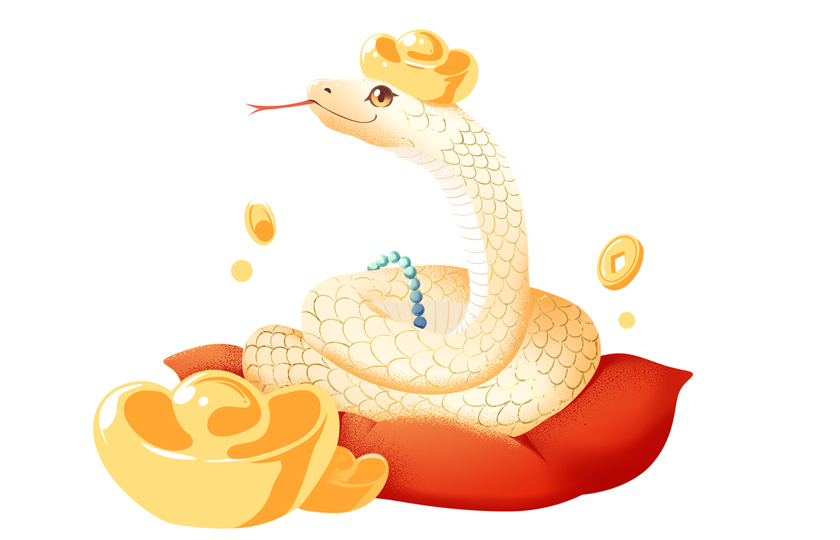
What is the animal for Chinese New Year 2025?
Snake.
The Chinese zodiac cycle is 12 years. 2024 is the year of the Dragon. 2025 is the year of the Snake.
In traditional Chinese culture, each zodiac sign has different characteristics. Snakes are often regarded as symbols of wisdom, elegance and mystery. People born in the year of the snake are sometimes considered to have sharp intuition, be charming and cautious.
What is the color of Chinese New Year 2025?
Red.
Red is the main and most iconic color of Chinese New Year (including 2025). In Chinese culture, red represents good luck, happiness and prosperity. During the Spring Festival, people use a large number of red items. For example, red couplets are pasted on both sides of the door. These couplets usually have auspicious phrases written on them to pray for good luck in the coming year. Red lanterns are also hung everywhere on the streets, in front of houses and in stores. The warm and bright red creates a festive and lively atmosphere, symbolizing driving away evil spirits and welcoming good things.
Gold.
Gold is another important color related to the Chinese New Year in 2025. Gold represents wealth and luxury. Many New Year decorations are used, such as the golden character "Fu" (meaning good luck). Firecracker and fireworks wrapping papers also often have golden elements. In addition, traditional New Year gifts such as gilded fruits or golden candies are also very popular. The combination of red and gold is very common, creating a visual effect of wealth and prosperity, expressing people's longing for a rich and happy life in the new year.
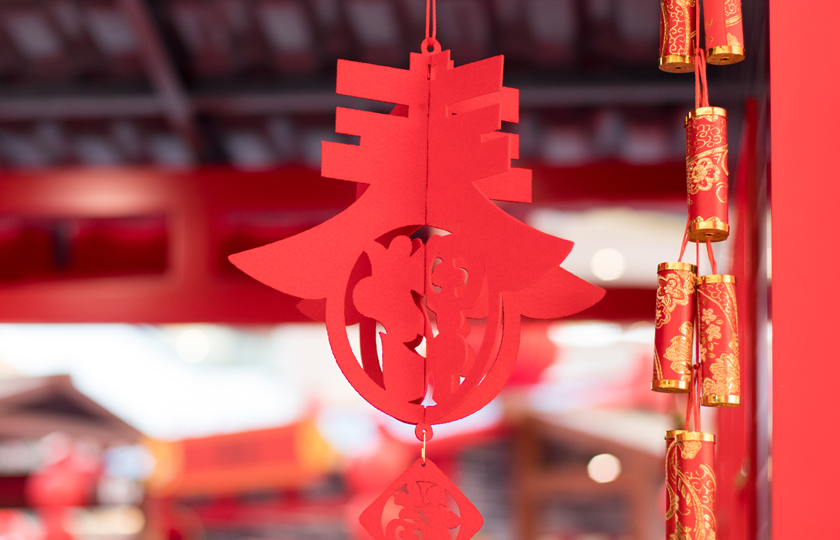
What food is eaten at Chinese New Year?
Dumplings
In northern China, dumplings are an essential food during the Spring Festival. They are usually made of thin wrappers and filled with a mixture of minced meat (such as pork, beef or mutton) and chopped vegetables (such as Chinese cabbage, leeks or scallions). The shape of dumplings is similar to the gold and silver ingots in ancient China, so eating dumplings symbolizes the expectation of wealth and prosperity. Some families also have the custom of putting a coin in one of the dumplings. The person who eats the dumpling with a coin is considered to have good luck in the coming year.
Nian gao
Nian gao is a traditional Chinese New Year food and is very popular in many regions. It is mainly made of glutinous rice flour. The Chinese pronunciation of "nian gao" sounds similar to the phrase "getting higher year by year", representing people's wish for life and career to improve year by year. Nian gao can be fried, steamed or baked. It has a sweet and soft texture and is often paired with various sweet sauces or fillings such as brown sugar, red bean paste or red dates.
Fish
The word "fish" in Chinese ("yu" for "fish") has the same pronunciation as the character "surplus". Therefore, having fish in the New Year's Eve dinner symbolizes having a surplus of wealth and food every year. Fish is usually served whole, and there is a custom of not eating all the fish. The remaining fish represents the wish for a continuous surplus in the coming year. Fish can be cooked in various ways, such as steaming, frying or stewing. Common fish varieties in New Year's Eve dinners include carp, crucian carp and perch.
Tangyuan
Tangyuan is a traditional food for the Lantern Festival (the 15th day of the first lunar month), and the Lantern Festival is also an important part of the Chinese New Year celebration. These are small round balls made of glutinous rice flour and filled with sweet fillings such as black sesame paste, peanut paste or red bean paste. The round shape of tangyuan represents reunion and family gathering. People will enjoy tangyuan in a sweet soup made of ginger and brown sugar.
Braised pork
Braised pork is a beloved dish during the Spring Festival. Pork is usually marinated first with a mixture of soy sauce, cooking wine, sugar and various spices, and then simmered slowly until the meat is tender and the sauce is thick. The rich and mellow taste of braised pork satisfies the taste buds and also represents a prosperous and abundant New Year. In some regions, a whole piece of streaky pork is used to make this dish to show grandeur and abundance.
Eight-treasure rice
Eight-treasure rice is a traditional festival dessert. As the name suggests, it is usually made of glutinous rice and contains eight different dried fruits, nuts and sweet fillings such as red dates, raisins, walnuts and lotus seeds. The combination of these ingredients not only makes this dish rich and sweet in taste but also symbolizes good luck and the joyous gathering of all good things. It is usually served in a bowl and shaped like a small mountain, representing prosperity and a good harvest.
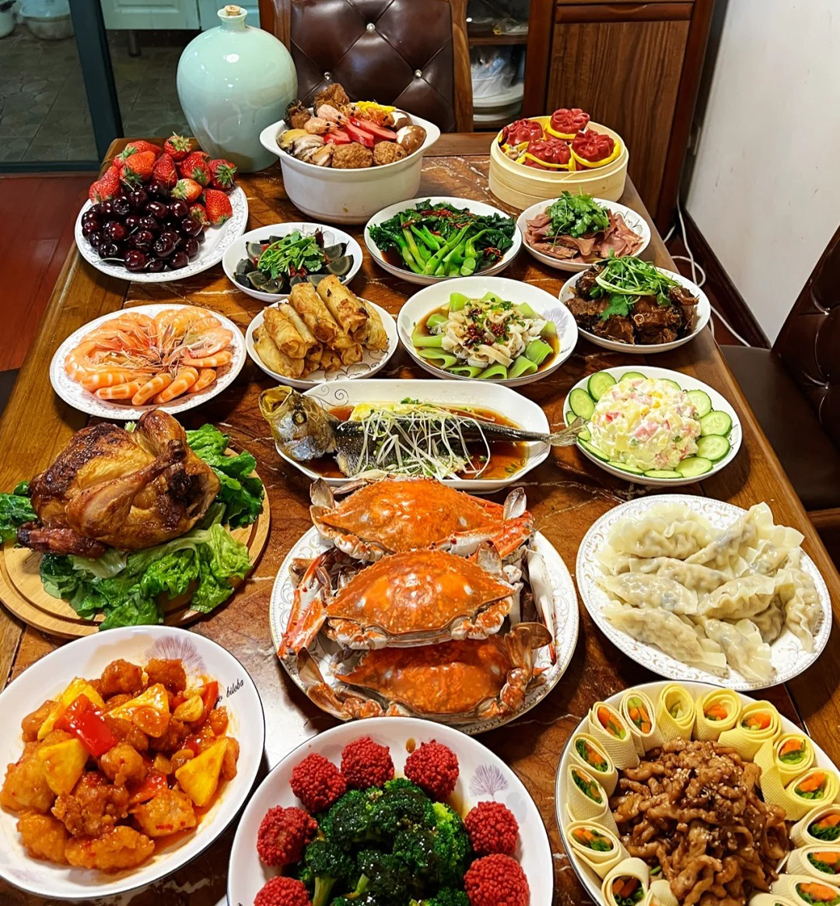
How do Chinese people celebrate the festival?
Preparations
1. Thorough cleaning: Before the arrival of the Lunar New Year, every household will conduct a thorough cleaning, aiming to sweep away the bad luck of the year and welcome the new year.
2. Purchase New Year goods: People will buy various New Year goods, such as food, beverages, clothing, decorations, etc., for use or giving to relatives and friends during the New Year.
3. Paste Spring Festival couplets and paper-cuts: Spring Festival couplets are neatly antithetical couplets written on red paper and are usually pasted on both sides of the door; paper-cuts are paper products cut into various auspicious patterns and pasted on windows. They imply good luck, happiness and satisfaction.
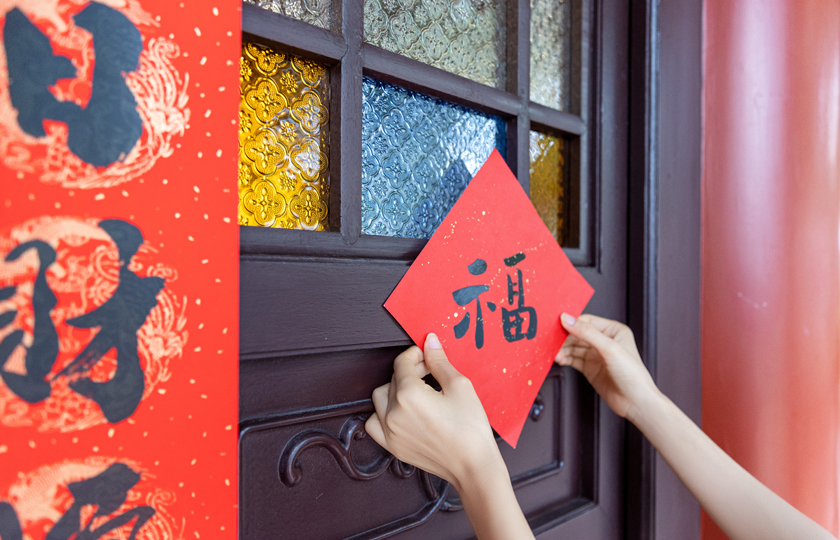
Celebrations
1. New Year's Eve dinner: On New Year's Eve, the whole family will gather together and share a sumptuous New Year's Eve dinner. This meal usually includes various traditional delicacies, such as fish (implying surplus every year), dumplings (implying prosperous wealth), etc.
2. Staying up late on New Year's Eve: After having the New Year's Eve dinner, people will gather to chat, play cards, watch TV, etc. until the midnight bell rings to welcome the new year. This is called "staying up late on New Year's Eve", implying bidding farewell to the old and welcoming the new and praying for peace.
3. Setting off firecrackers and fireworks: At midnight, people will set off firecrackers and fireworks to drive away evil and welcome good fortune. Nowadays, due to environmental protection and safety considerations, setting off firecrackers and fireworks has been banned or restricted in some areas, but people still celebrate in other ways.
4. Paying New Year calls: During the New Year, people will visit each other, pay New Year calls to elders and relatives and friends, and send blessings and gifts. This is not only a way to express respect and blessings, but also an opportunity to enhance family affection and friendship.
5. Visiting temple fairs: Temple fairs are generally held during the Spring Festival, especially from the first day to the fifteenth day of the first lunar month. There are various activities at temple fairs, such as folk artists performing acrobatics, dragon and lion dances, etc. There are also many snack stalls selling characteristic delicacies such as sugar figurines and sugar-coated haws. In addition, there are various handicraft stalls displaying and selling paper-cuts, New Year pictures, etc. Visiting temple fairs is a good place for people to feel traditional folk culture and a joyous festival atmosphere.
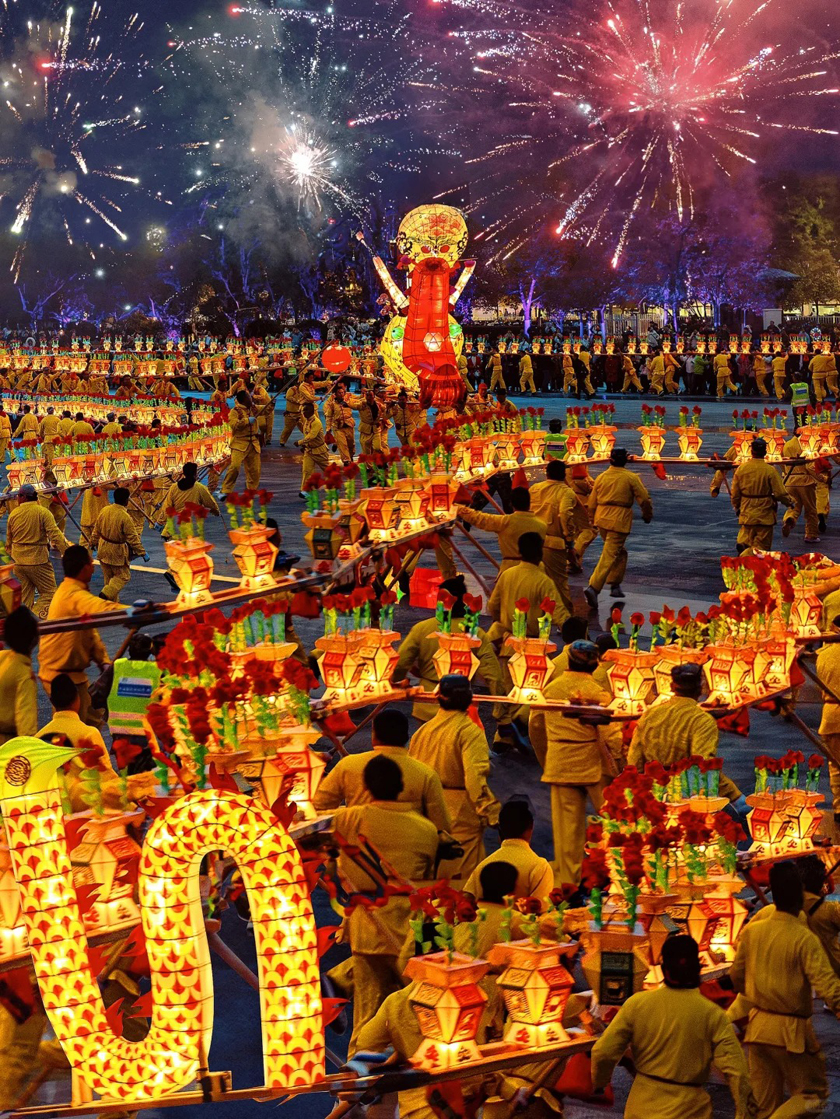
Traditional customs
1. Giving lucky money: Elders will give lucky money to juniors, usually in red envelopes. This implies blessing juniors with safety, health, success in studies and smooth careers.
2. Dragon and lion dances: In some areas, people will perform traditional programs such as dragon and lion dances to pray for good weather and a bumper harvest.
Modern celebration methods
1. Traveling and taking vacations: With the improvement of living standards, more and more people choose to travel and take vacations during the New Year to relax and feel different cultural atmospheres.
2. Sending New Year greetings online: With the development of technology, people can send New Year greetings and gifts to relatives and friends far away through the Internet.
Can you shower on Chinese New Year?
Yes, you can take a bath during the Lunar New Year.
In traditional Chinese beliefs, there is a misunderstanding that people should not wash their hair or take a bath in the first few days of the Lunar New Year, as this may "wash away good luck". However, this is more like a superstition and there is no practical basis.
In modern times, personal hygiene is still a top priority for most people, and they usually maintain normal bathing and cleaning habits during the Spring Festival.
What are the traditional taboos during the Lunar New Year?
Taboo on dumping garbage and splashing water.
On the first day of the first lunar month, people usually do not sweep the floor, dump garbage or splash water. Because in traditional concepts, these actions may pour out the family's fortune and good luck. People hope to accumulate blessings on the first day of the new year, so they will wait until the second or third day of the lunar new year before doing these cleaning tasks.
Taboo on saying unlucky words.
During the Spring Festival, especially in the first few days of the new year, people try to avoid saying some words with unlucky meanings such as "death", "illness" and "poverty". Because the Spring Festival is a festive holiday, everyone hopes to welcome the new year with positive and auspicious words and avoid bringing bad luck to the family.
Taboo on breaking things.
If you accidentally break items such as bowls and cups, it will be considered unlucky in some places. If this happens, people usually say "broken for safety year after year" immediately to resolve this unlucky implication and hope that the new year will still be safe and smooth.























